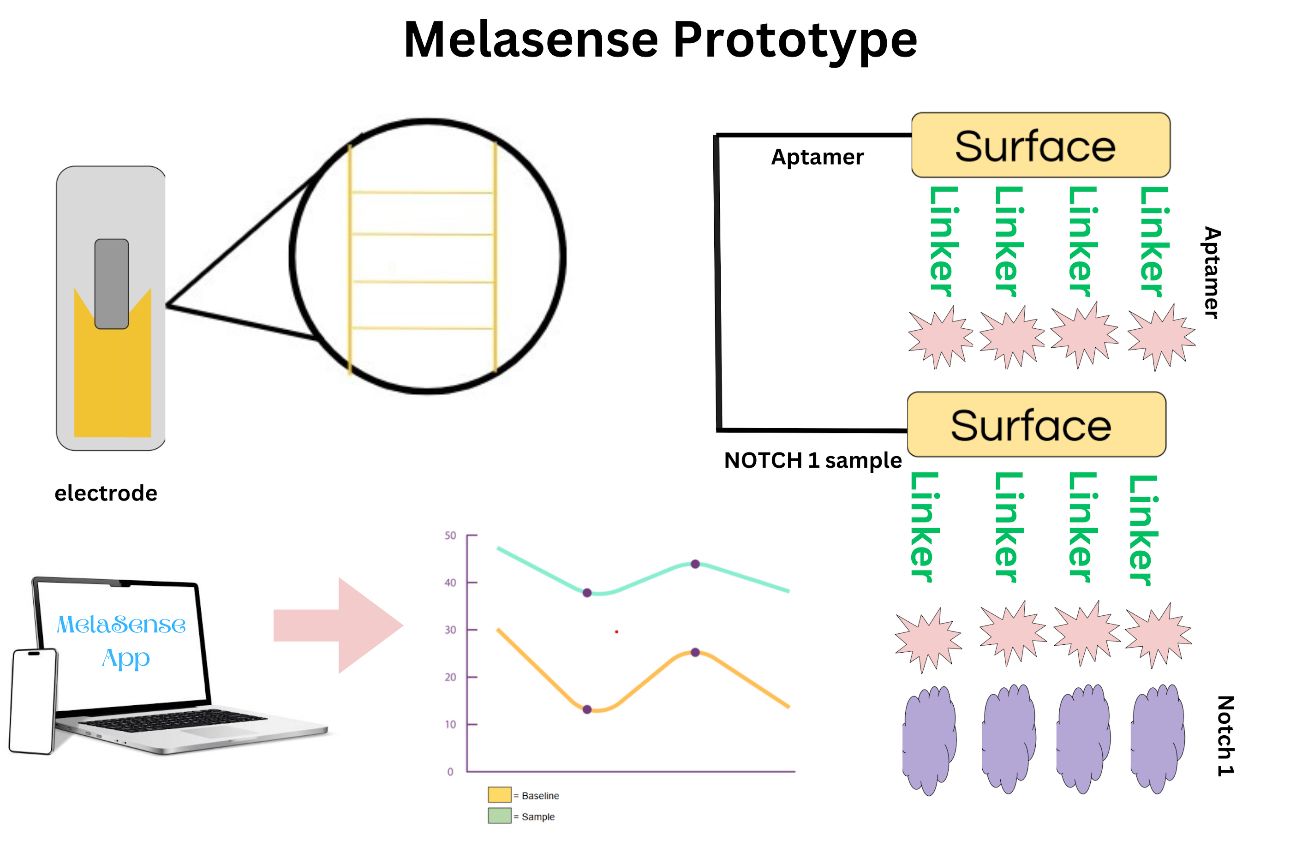MelaSense
We will explore and gain a deeper understanding of cancer and our product, MelaSense in this section.
Cancer is a group of diseases that have uncontrolled growth and spread of abnormal cells within the body. These cells can form tumors or invade surrounding tissues, disrupting normal functions. The disease can arise in any organ or tissue, leading to many symptoms and challenges depending on the cancer's type, location, and stage. Cancer becomes especially deadly when metastasis, the spreading of cancer cells throughout the body, occurs. Advances in research have led to more effective treatments, like targeted therapies and immunotherapies, but cancer remains a major global health issue. Early detection and personalized treatment (such as genetic screening, and in some cases preventive surgery and vaccines) prove to be the best method to prevent cancer.
Melanoma is a serious form of skin cancer that begins in melanocytes, the pigment-producing cells in the skin. Most commonly, melanoma appears as a new or altered dark spot on the skin with irregular borders. It can also be presented in different ways, like in ocular melanoma where the proliferating occurs in the eye. Another type of melanoma, desmoplastic melanoma, commonly appears as a scar rather than a mole, and acral lentiginous melanoma can grow under nails, making it hard to see. While melanoma is less common than other skin cancers, it is more likely to metastasize if not detected early. Potential causes of melanoma are environmental risk factors, like smoking and excessive sun exposure, and genetics. Melanoma can often be managed effectively when caught in its initial stages.
Recognizing melanoma early is key to successful treatment. Regular skin checks by a healthcare provider and self-examinations are crucial. The ABCDE rule is a helpful guideline for identifying suspicious moles: Asymmetry, Border irregularity, Color variation, Diameter greater than 6mm, and Evolving (changes over time). If any of these signs are present, it is important to seek medical advice as soon as possible.
While melanoma is aggressive, it is also one of the most preventable types of cancer. Reducing sun exposure, wearing protective clothing, and using sunscreen are key preventive measures. Additionally, people with a family history of melanoma or those with a high number of moles should take extra precautions, including regular screenings and genetic counseling if necessary.
Overall, cancer awareness and early intervention are vital in the fight against cancer. By understanding the risk factors, recognizing early signs, and pursuing effective treatments, individuals can improve their chances of survival and lead healthier lives.
Nodular melanoma is a particularly aggressive form of melanoma because of its rapid growth. Unlike other types of melanoma, nodular melanoma can be seen as a raised, colorless bump. This type of melanoma goes into the skin quickly, making it more likely to spread to other parts of the body if not treated quickly. Nodular melanoma can occur anywhere on the skin but is most commonly seen on legs and arms. This form of melanoma has a higher risk of metastasizing compared to other melanoma types.
Research to identify genes characteristic of nodular melanoma is still in very early stages. One of the genes that has been linked to the aggressive progression of nodular melanoma is Notch1. Notch1 can act as both a tumor promoter and suppressor; there is evidence supporting that Notch1 expression is related to an aggressive pattern of melanoma. This suggests that Notch1 contributes to the spread of cancer cells from the primary tumor to other parts of the body, making the tumor more aggressive.
Further studies on Notch1 and its role in melanoma progression could lead to targeted therapies that can more effectively treat this aggressive cancer. Researchers are focusing on developing drugs that can inhibit Notch1 signaling pathways to reduce the spread of melanoma cells and improve treatment outcomes. In the future, understanding the genetic makeup of melanoma could allow for more personalized treatment plans, making it easier to combat this potentially deadly disease.
Here is an in depth review Exploring Notch in Melanoma: A Recent Review of Its Role in Tumor Proliferation and ProgressionSELEX (Systematic Evolution of Ligands by Exponential Enrichment) is a technique used in labs to find nucleic acid sequences, such as DNA and RNA, or proteins that bind to a specific target molecule. The steps of SELEX are, firstly, sequences of DNA/RNA are generated randomly. These sequences are exposed to a target molecule, so that some of the sequences can bind to it. The sequences that bound to the target molecule are separated from the rest, and then the selected sequences are amplified. The process is repeated multiple times, and it is expected that with each round selecting sequences that have progressively higher affinity to the target molecule. The sequences that result from this process make aptamers with high affinity for the target molecule, which can be used in many ways, such as developing treatments for melanoma.
There are many variations of the SELEX technique, one being cell-SELEX. Cell-SELEX is a variant of traditional SELEX that was designed to find aptamers that bind to live cells rather than the cell-surface proteins typically used. Cell-SELEX singles out aptamers that can discriminate between different cell types, making them especially useful in cancer research and development. The Cell-SELEX process has the same cycles of traditional SELEX, but it is done with whole cells, which gives a more relevant environment for aptamer selection. This method improves the precision of targeted therapies.
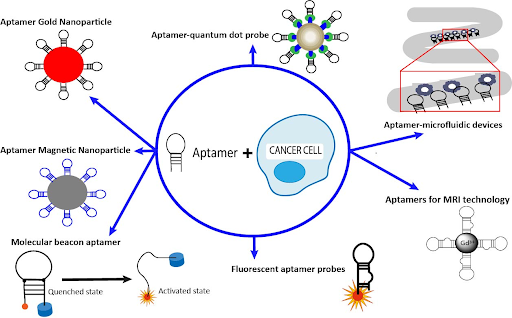
Cell-SELEX has the potential to significantly improve the specificity and efficiency of treatments by enabling the creation of aptamers that can precisely target cancer cells, without affecting surrounding healthy tissue. This level of precision could lead to less side effects and more effective therapeutic outcomes. The applications of SELEX and aptamers in cancer research are still expanding, with ongoing studies focusing on their potential use in diagnostics, therapeutics, and personalized medicine.
The purpose of our research was to develop a biosensor with aptamers that can detect Notch1 in patients diagnosed with nodular melanoma. This biosensor was developed and tested in different conditions, such as without disease, with disease, differentiation of nodular melanoma from other melanomas, and the ability of this biosensor to predict tumor progression.
The project was conceived as a biosensor that is able to differentiate patients who have a higher risk of melanoma progression using an aptamer (which could be a DNA or RNA molecule) to detect aggressive cells from the nodular melanoma tumor, specifically the Notch1 protein. It uses saliva as an initial sample, making the collection easy and usable immediately.
This technology provides a follow-up process of treatment response and disease progression in underdeveloped countries, remote areas, and small hospitals/clinics that don’t have the infrastructure to provide complex exams. This biosensor has an aptamer that will detect the Notch1 protein. The biosensor will be composed of a chip with an electrode.
The purpose of our research was to develop a biosensor with aptamers that can detect Notch1 in patients diagnosed with nodular melanoma, with or without current treatment. The goal of the paper is to show how the research for this biosensor was developed and tested in different conditions, such as with no disease, with disease, differentiation of the nodular melanoma from the other melanomas, and also the ability of this biosensor to predict tumor progression and response to therapies.
The project was conceived as a biosensor that is able to differentiate patients who have a higher risk of melanoma progression using an aptamer (which could be a DNA or RNA molecule) to detect aggressive cells from the nodular melanoma tumor, specifically Notch1 protein. It uses saliva as an initial sample, making the collection easy to be done by the user and be used immediately with almost no processing.
It is a technology that provides a follow-up process of treatment response and disease progression in underdeveloped countries, remote areas, and small hospitals/clinics that don’t have the infrastructure to provide complex exams. This biosensor has an aptamer that will detect Notch1 protein, mutated or not. The biosensor will be composed of a chip with an electrode.
This simple, portable biosensor could revolutionize the early detection of melanoma and the monitoring of treatment effectiveness. It's easy accessibility and ability to be used in resource-limited settings could make it a game-changer in global melanoma care. This work exemplifies the potential of aptamers in medical applications and demonstrates how biosensors can be developed for precise and affordable cancer monitoring.
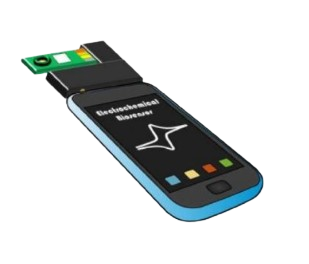
In the electrode, there will be a silver or gold treatment, a linker, and an aptamer, as shown in the image below. Replace CEA for the Notch1 protein.
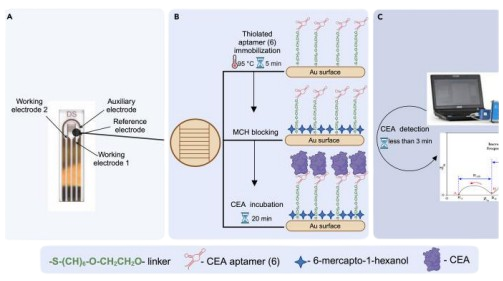
When the Notch1 protein is bound to the electrode, a different signal is detected compared to the chip without the protein. These changes in impedance generate a graph that differentiates people with the Notch1 protein from those without the mutated Notch1 protein. The aptamer was initially developed using cell-SELEX, identifying Notch1 as the target. All experimental stages were conducted in collaboration with a major cancer center in the United States. Using a primary cell bank, cells expressing Notch1 were identified through flow cytometry or immunofluorescence, with more than 80% of cells expressing Notch1 and others expressing no Notch1. Negative selection by Cell-SELEX used Notch1-negative cells for five rounds, followed by 10 rounds of SELEX with Notch1. DNA aptamers were sequenced and synthesized by a third-party lab. Next, Notch1 proteins were incubated in the biosensor chip with the developed aptamer, and impedance results were collected. Samples without Notch1 protein allow free movement of molecules, easily reaching the electrode. However, samples with Notch1 protein bind to the aptamer, creating a physical barrier, making it more difficult for molecules to reach the electrode. This difference in binding generates distinct graphs for Notch1 positive and negative patients/samples. This is because the binding of the Notch1 protein to the aptamer causes a change in the electrical current in the biosensor chip, which can be read using computer or mobile software. Unspecific samples, including other types of Notch1-negative melanomas, were also used to validate the ability of the aptamer to differentiate Notch1-positive nodular melanoma from other samples. Clinical samples were then collected from patients who consented to participate in a study approved by an official ethical committee. The following patient data was collected:
- Report with melanoma identification
- Disease status (according to international melanoma classification guidelines)
- Diagnosis time
- Treatments undergone (with dates and details)
- Response to these treatments
- Mutations identified in molecular studies
- Disease progression time
Saliva samples were collected in containers specifically designed for this purpose, centrifuged to remove particulate material, and stored at -80°C until use. The samples were thawed just before testing, and the results of the electrochemical studies were compared with the patient data.
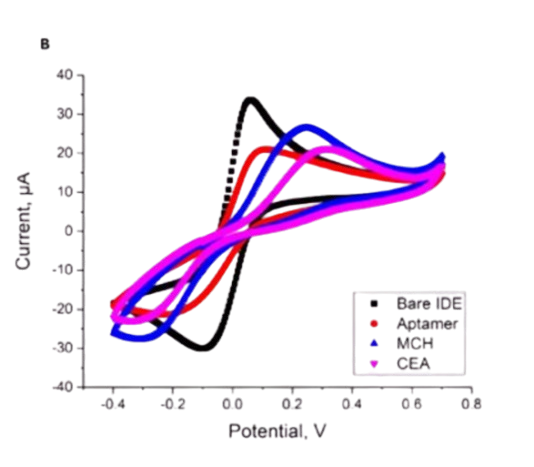
Stability tests were also conducted, including tests on patient samples at 25°C with humidity levels between 40-60%, monitored with certified equipment. Further tests were done at 4, 8, 20, 37, and 40°C with varying humidity levels (20%, 30%, 70%, and 80%). Transport and storage tests simulated conditions where the biosensor and aptamers were transported between 15-20°C for 24 hours, followed by storage at 2-8°C for another 24 hours.
The advantages of this method include:
- Small clinics worldwide can access the technology.
- Patients who previously lacked access to follow-up care due to time or financial constraints can now benefit from this method.
- The product could be widely available in pharmacies with trained staff.
- The selection of the aptamer is based on a curated set of patient samples and cells from a prominent cancer center.
- It is easy to install and well-accepted by professionals after training.
- The biosensor has at least 95% sensitivity and specificity:
- Sensitivity: The ability to correctly identify patients with the disease.
- Specificity: The ability to correctly identify individuals without the disease.
- It is suitable for remote areas, supporting different temperatures and humidity levels.
- It is a low-cost alternative compared to current expensive detection methods like:
- Exams in or near hospitals
- Biopsies and histopathological analysis
- Imaging exams (PET, MRI)
- Genetic tests and panels
Potential Customers:
- People who do not have access to traditional labs and exams, particularly in underdeveloped countries and remote areas (due to geographic or financial limitations)
- Small hospitals and clinics lack the infrastructure to provide complex exams.
- Pharmacies with staff trained to administer the test.
- KOL’s (Key Opinion Leaders)
Marketing Strategies to Reach Customers:
- Ads on TV to create broad public awareness.
- Social media advertising targeted towards cancer hospitals, clinics, and patients.
- Medical Science Liaison visits to cancer hospitals and physicians to demonstrate the technology.
- Participation in cancer research and treatment conferences to showcase the technology to industry professionals.
